
Caring for outdoor textiles
In the past, outdoor furniture was designed for a simple backyard barbecue with a Weber grill or an afternoon catching some rays by the pool. Most seating was casual and either folded or featured rubbery straps. New fabrication methods and a trend toward holistic architecture have created more elegant and upholstered pieces.
These designs blur the lines between indoor and outdoor spaces. Dining chairs, patio sectional sofas, and lounge chairs have modern designs. They use high-tech fabrics that withstand many conditions. While most require little attention, a few tips can keep them in tip-top shape. This section of our guide covers a few prominent outdoor fabric types and how to maintain them.
Outdoor fabric & cushion maintenance schedule
To keep your outdoor seating comfortable, attractive, and mold-free, it’s important to follow a consistent cleaning routine. Different types of outdoor fabrics, such as mesh slings, ropes and cushions, have special needs. These needs depend on their exposure and material. The table below outlines how often to perform light and deep cleaning for various fabric types, along with key care tips.
| Fabric Type | Light Cleaning | Deep Cleaning | Care Notes |
|---|---|---|---|
| Mesh Slings | Once a month | Every 3 months | Rinse and wipe down regularly; spot clean spills ASAP. |
| Webbing & Rope Seating | Monthly dusting or rinse | Twice yearly | Check overlaps for mold or mildew; scrub gently. |
| Removable Fabric Covers | Spot clean monthly | 2–3 times per season | Machine wash if permitted; air dry completely. |
| Non-Removable Cushions | Monthly surface wipe | Seasonally or when stained | Don’t saturate foam; dry thoroughly in the sun. |
| All Fabrics (Mildew-Prone) | After heavy rainfall | As needed | Use diluted bleach (if safe) or mildew remover carefully. |
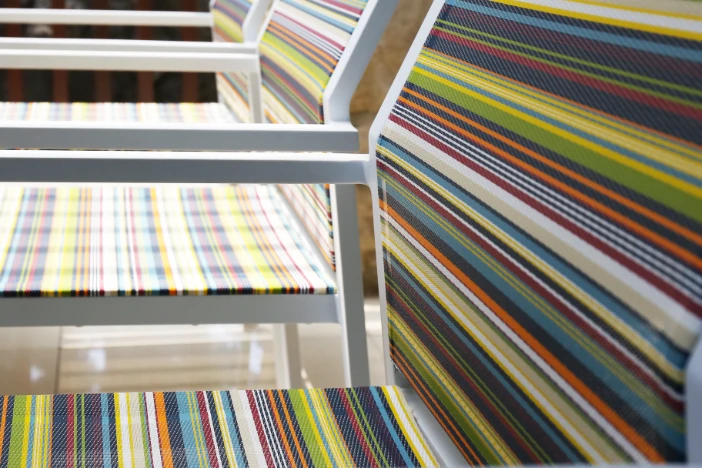
Synthetic Mesh (slings)
Most high-quality patio sling chairs and seating is made from PVC-coated polyester mesh. This strong synthetic textile is stretch and tear-resistant and relatively easy to clean [Van Craenenbroeck, Puystiens, De Laet, Van Hemelrijck & Mollaert 2016]. The resin coating keeps the woven fibers safe from damage and fading due to the sun and weather. Holes in the weave help the material dry quickly. Serge Ferrari’s Batyline and Twitchell’s Textilene are two sling fabrics popular with high-end outdoor brands. Clean sling pool furniture every three months to prevent mold and mildew from growing.
- Leave the sling fabric on their frames when cleaning
- Remove any dirt or other organic debris on the surface with a cloth or whisk broom
- Add mild dish soap to lukewarm water
- Wash the mesh directly with a sponge or microfiber cloth
- Allow the soapy water to seep into the material before gently cleaning the surface with a soft-bristled brush
- Don’t forget to clean the bottoms and backs of the slings too. You may need to place a towel under the furniture. This will help prevent the frame from getting scratched by the ground
- Rinse the fabric with clean water
- Let the mesh sling fabric air-dry
Manufacturer Video Tip – Synthetic Mesh – Batyline Elios
Sling chair fabrics like should be regularly maintained but occasional spot cleaning may need a specialized focused approach. Check out this “How to” video from Serge Ferrari to clean stubborn stains from ketchup, red wine, sunscreen and more.
Synthetic Webbing (straps & ropes)
Some outdoor furniture uses crisscrossing straps or parallel roping to provide flexible comfort. In high-end seating, the open weave is usually made from a blend of materials. These include polypropylene, polyester, and sometimes hemp. Before washing synthetic webbing, remove any debris that may have become lodged in the gaps of the weave or where straps overlap. Otherwise, it’s cleaned like sling chairs – mild soap and water, light scrubbing and a clean rinse. Don’t use alcohol-based, solvent or acidic cleaners or metal bristled brushes.
BUY WEBBED OUTDOOR FURNITURE
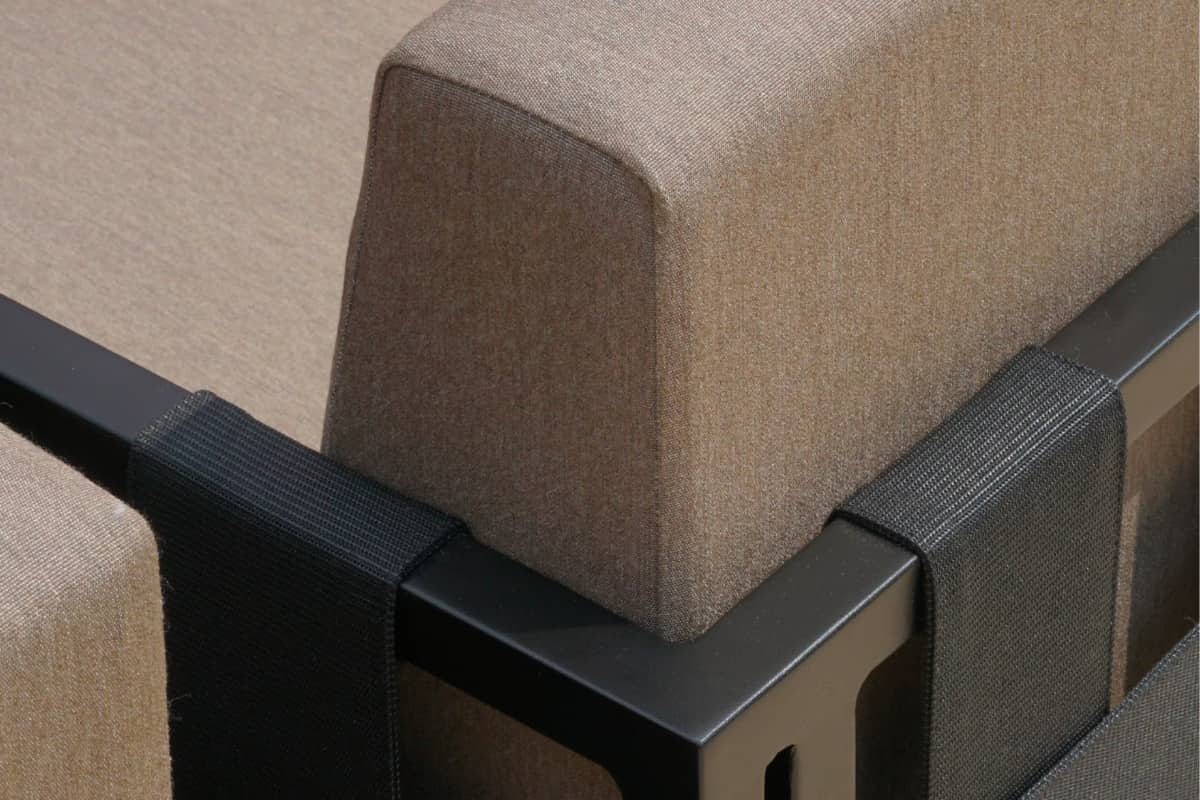
Upholstery Cushions & Pillows
Upholstered outdoor seats have cushions and pillows wrapped in UV and weather-resistant fabric. Covers are made from acrylic, polyester, or vinyl threads. These threads are coated to protect against water damage and fading. Some covers have zippers or fasteners that allow you to remove their foam inserts, while others are sewn shut. If you want your outdoor sofa and loungers to last long, look for Sunbrella patio furniture with Urecel QuickDry foam.
Cleaning outdoor cushions with removable covers
Some removable covers are machine-washable. However, cleaning them by hand is very easy.
- Take out the foam core
- Brush any dirt off the fabric
- Spray with soapy warm water until the cover is soaked through or soak it in a bucket filled with soapy water
- Gently scrub the cover from seam to seam with a soft-bristled brush to remove light stains
- Do both the inside and outside to remove stubborn stains
- Rinse with clean water
- Let the cover air dry completely before reinserting the foam core

Washing upholstery with non-removable fabric covers
Non-removable covers require a slightly different approach but it’s still pretty straightforward.
- Apply the soapy water to the outside of the cover with a sponge
- Rub the surface so that the soap bubbles are worked into the fabric
- Use a high-pressure garden hose to clean off the detergent residue
- Set the cushions on their edge to air dry
Removing mold & mildew stains from synthetic fabrics
Most high-end outdoor upholstery fabrics resist fungus growth. However, if moisture and organic substances are not periodically cleaned off, mildew and mold can accumulate.
- Prepare a cleaning solution with one cup of bleach, ¼ cup of mild detergent and a gallon of water
- Spray the stained area and allow it to soak thoroughly into the fabric for roughly fifteen minutes
- Using a soft-bristled brush, sponge or towel, clean the entire area until the stain is no longer visible
- Rinse the fabric thoroughly to flush away any remaining soapy residue
- Air dry until the cover is free from moisture
Manufacturer Video Tip – Upholstery Cushions – Sunbrella Fabric
Every day dirt and grime is one thing but outdoor cushions have to survive a myriad of potential mishaps. Backyard parties with kids and adults eating, drinking and lathering on SPF 50 sun block are a recipe for some serious spills. Fortunately, high-performance textiles are designed to resist staining if attended to in a reasonable amount of time. Here’s a “pro tip” video from Sunbrella on how to spot clean dried red wine stains.
Post-season maintenance for outside cushions & fabric
Before the rainy season or winter arrives, clean, dry, and store your outdoor cushions and fabrics. This will protect them from moisture damage, mildew, and pests. Different materials require different care. However, the main idea is the same.
- Clean them well
- Dry them completely
- Store them in safe, breathable conditions
Below is a comprehensive guide tailored to specific fabric types and storage environments.
Deep clean before storage
Regardless of fabric type, always perform a thorough cleaning at the end of the season:
- Mesh Slings – Scrub with mild soap and water, rinse well, and let them air dry fully in the sun.
- Rope or Webbing – Clean gently with a soft brush and soapy water. Pay special attention to overlapped areas where mildew can form easily.
- Removable Cushion Covers – Follow manufacturer instructions—most are machine washable. Use a gentle cycle and air dry completely before storing.
- Non-Removable Cushions – Surface clean with a fabric-safe cleaner or mild soap solution. Avoid over-saturating the foam. Let them dry upright in a sunny, breezy area.
Ensure complete dryness
Even mildew-resistant materials can harbor mold if stored damp. Be sure all fabrics are bone dry before storing:
- Allow multiple days of sun exposure if needed.
- Press down on foam cushions to check for hidden moisture inside.
- Avoid storing right after rainfall or humid days.
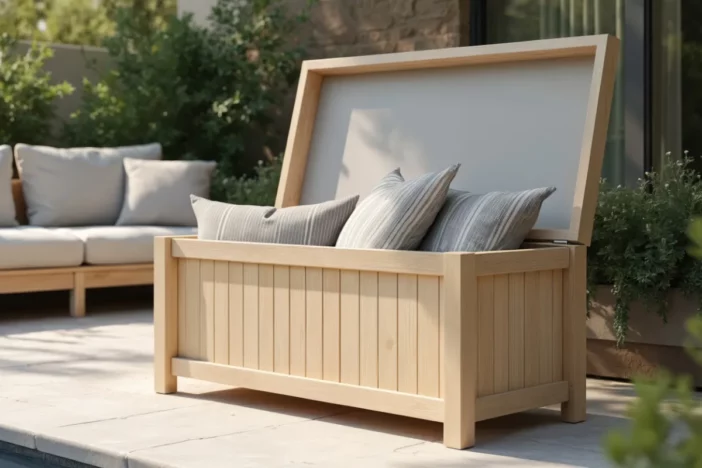
Smart storage solutions
Store outdoor cushions and fabrics properly to extend their life and prevent off-season damage:
| Storage Element | Recommendation |
|---|---|
| Storage Containers | Use breathable, water-resistant bins or deck boxes with ventilation slats. |
| Avoid Airtight Plastic | Do not use sealed plastic totes or garbage bags, which trap humidity. |
| Protective Covers | Use breathable cushion bags or fabric dust covers to guard against dirt and pests. |
| Silica or Charcoal Packs | Place desiccants inside bins to absorb residual moisture. |
| Elevation | Store cushions off the ground (on shelving or pallets) to allow air circulation. |
Ideal storage environment
Choose a safe and climate-stable space to prevent extreme weather damage:
- Best Locations – Dry basement, insulated garage, attic with ventilation, or a storage shed with airflow.
- Avoid – Damp crawlspaces, non-insulated sheds, or outdoor plastic bins exposed to direct weather.
- Rodent Protection – Add cedar blocks or pest deterrents to storage bins if storing in garages or sheds.
Helpful Article
Read the fabrics section of our Outdoor Furniture Materials Guide to learn the pros and cons of specific textiles.
Don’t forget about little critters
Protecting your patio furniture against Mother Nature and mankind is critical to extending its useful life. Corrosion, mold, mildew, fading, and stains can harm the strength and look of your outdoor seating and tables. However, you need to remember the pests that call your backyard home. The final section of our guide identifies some of the most pesky critters that might mar your patio lounge or dining set.
Guide Sections
References
- Van Craenenbroeck, M., Puystiens, S., De Laet, L., Van Hemelrijck, D., & Mollaert, M. (2016). Quantitative study of the impact of biaxial test protocols on the derived material parameters for a PVC-coated polyester fabric. Procedia Engineering, 155, 220-229.

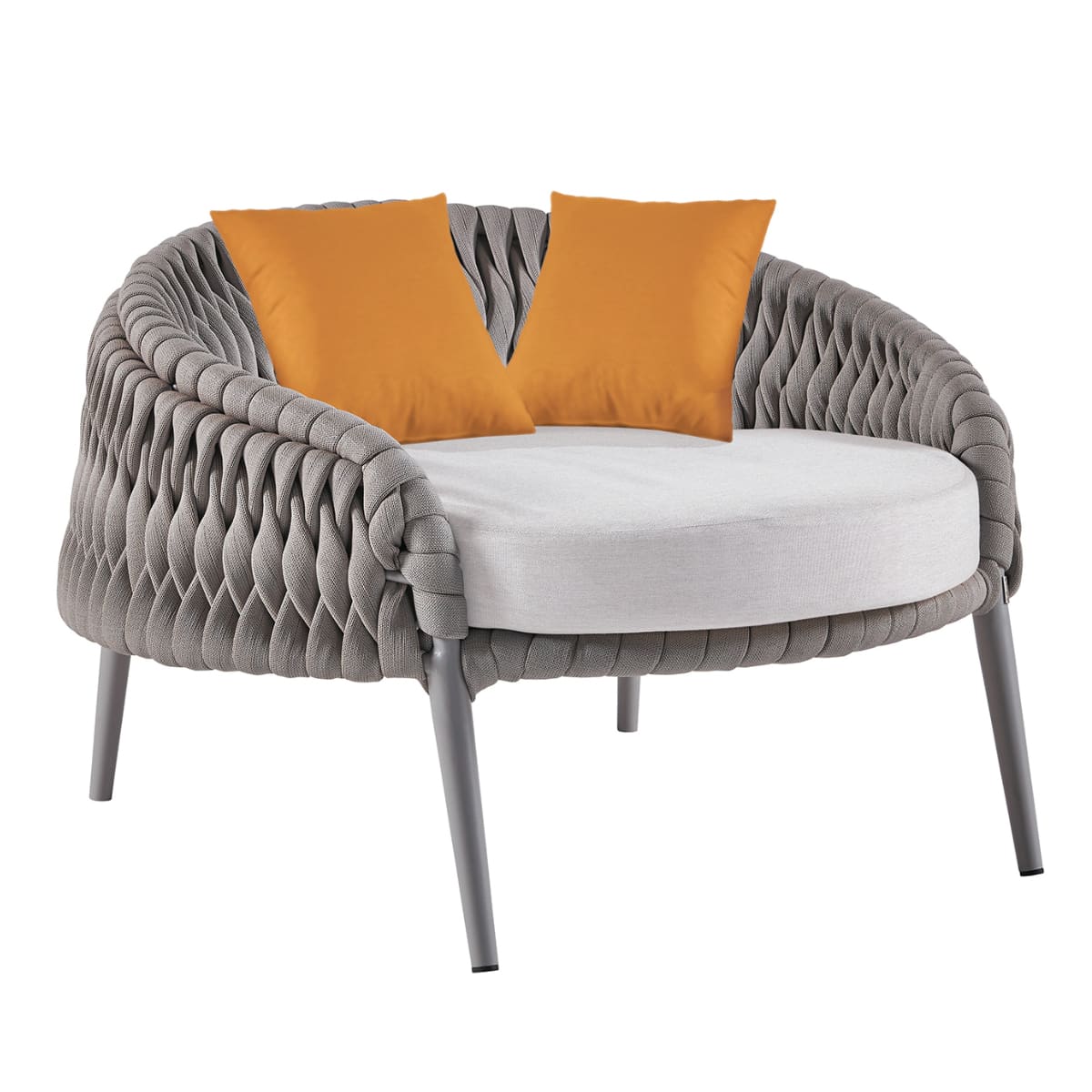
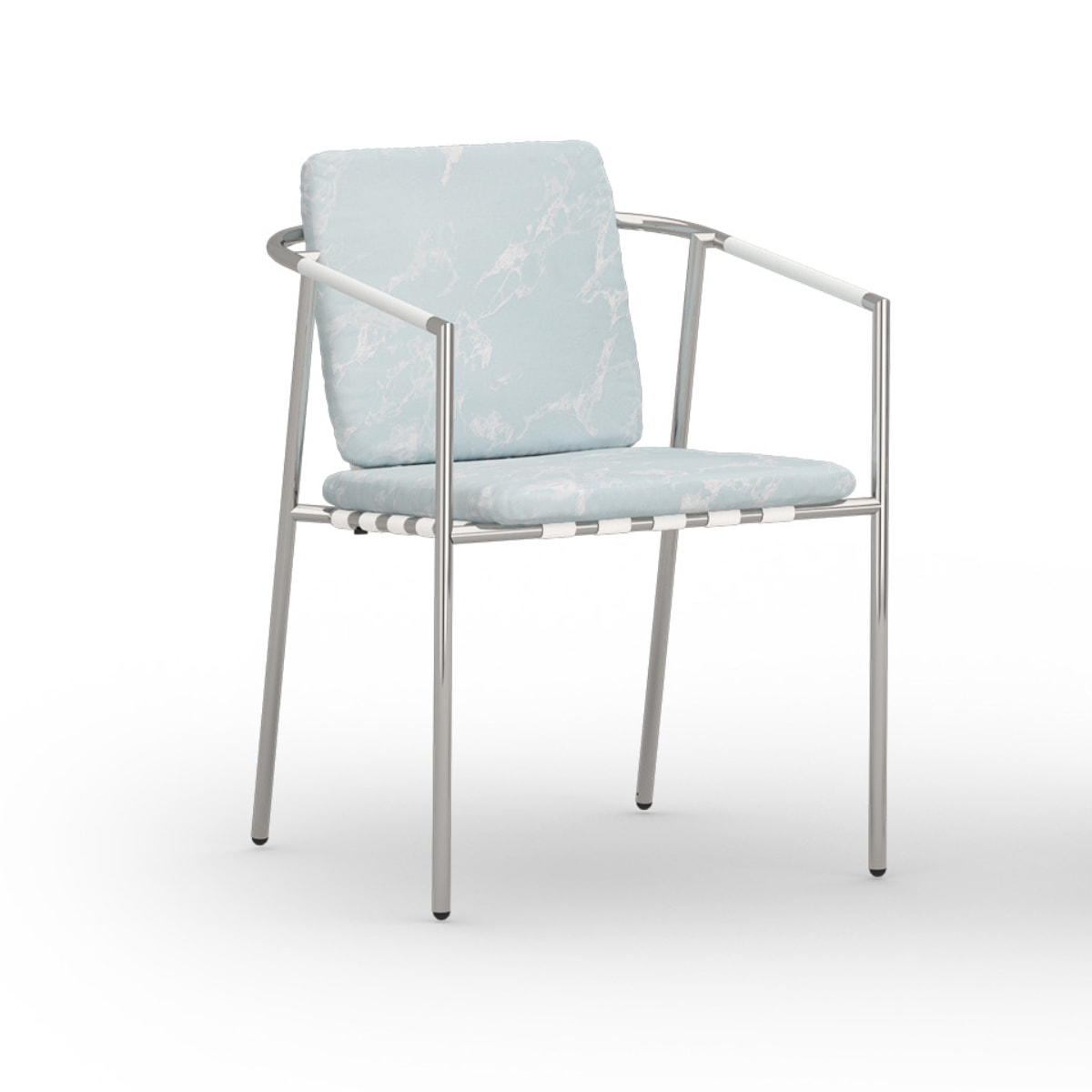
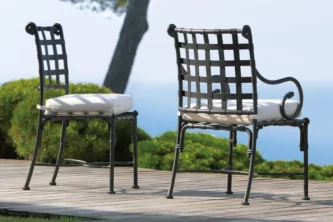
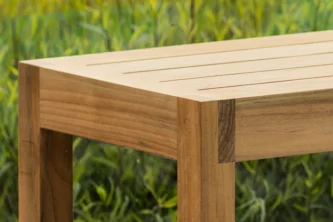

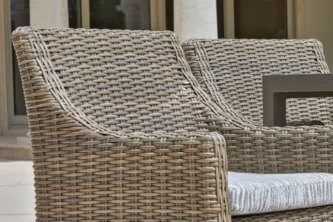
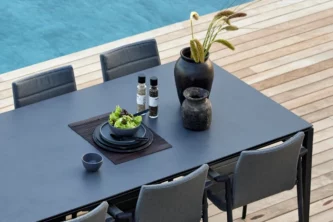





Leave a Reply